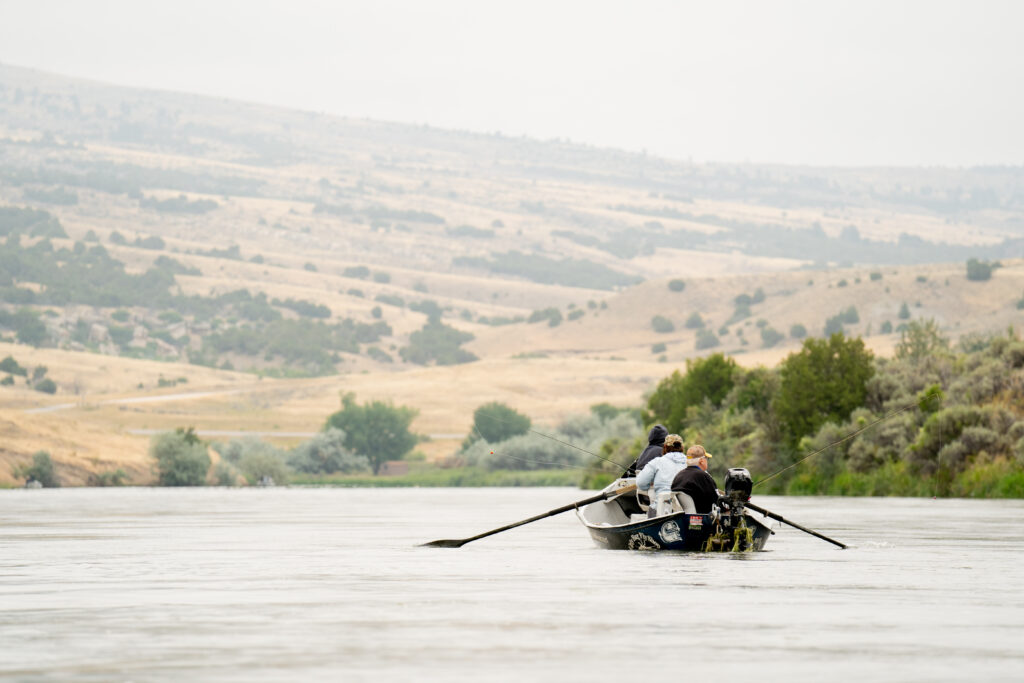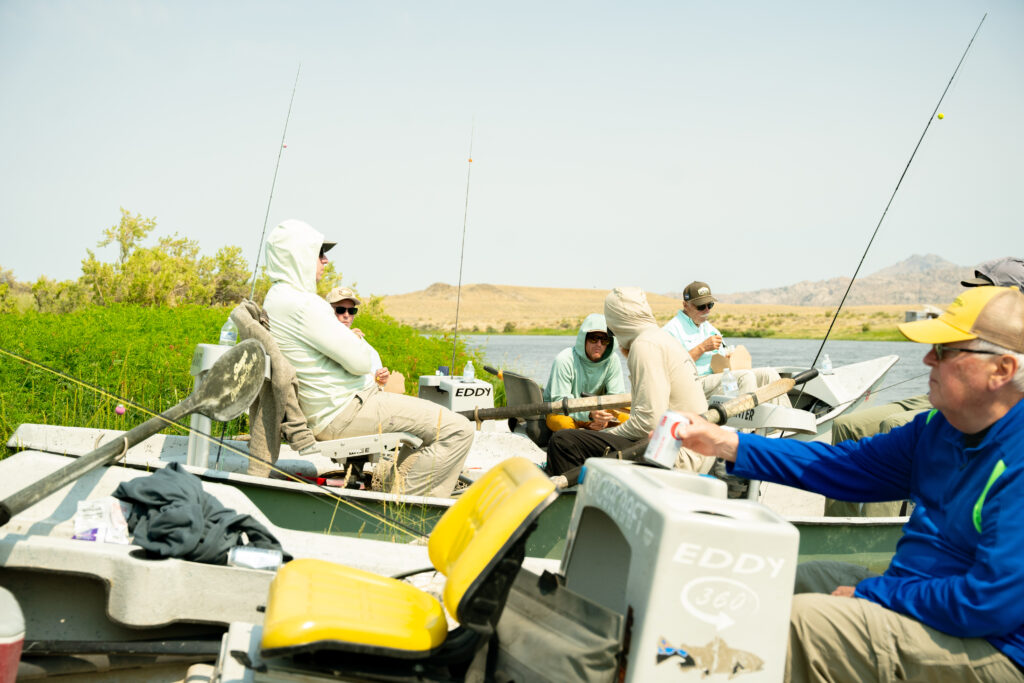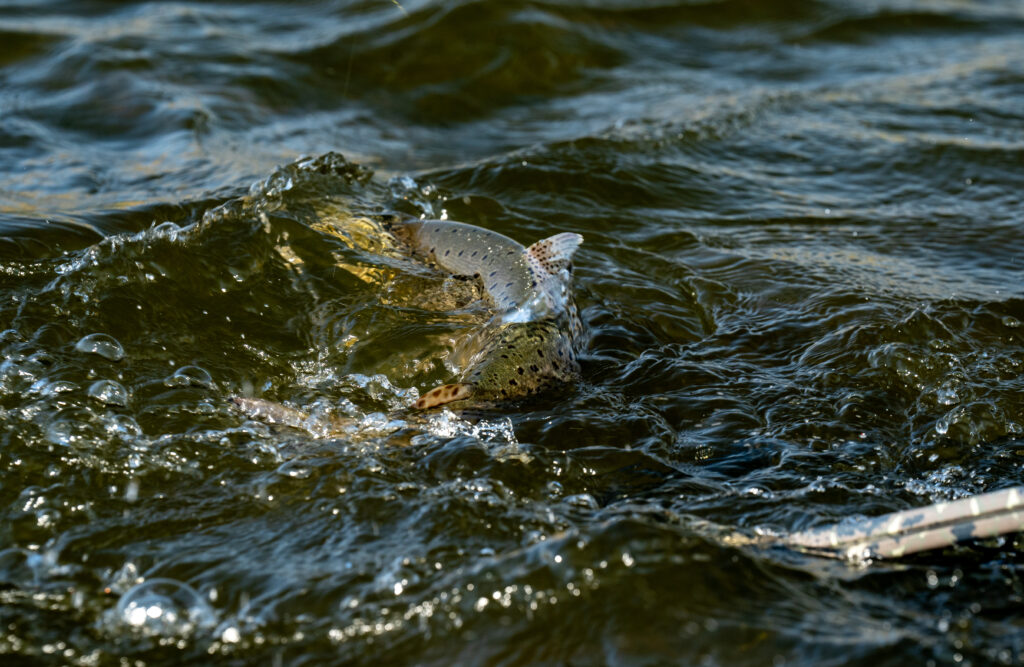Archive for September 2024
Mastering the Art of Fly Fishing from a Drift Boat
Fly fishing from a drift boat combines the serenity of a river environment with the precision of boat-based fishing, creating a unique and rewarding experience. Whether you’re a seasoned angler or a novice looking to expand your skills, understanding the nuances of this technique can significantly enhance your time on the water.
1. Understanding Your Drift Boat
Types of Drift Boats:
Drift boats are designed to navigate shallow, fast-moving rivers and provide stability and maneuverability. The most common types include the traditional wooden drift boat and modern fiberglass or aluminum versions. Each has its own advantages, but all are built to offer a steady platform for casting.
Boat Positioning:
Your position on the boat will affect your casting and the way you interact with the water. Typically, you’ll have an oarsman and one or two anglers. The oarsman controls the drift, while the anglers focus on fishing. Understanding the boat’s movement and positioning is crucial for effective fly fishing.

2. Gear and Preparation
Fly Rod and Reel:
Select a rod and reel suited for the type of water and fish species you’re targeting. From personal experience I like to use a 10 foot 6-weight rod. Ensure your reel has a smooth drag system to handle the demands of fighting fish.
Fly Selection:
Choose flies based on the hatch patterns in the river you’re fishing. Nymphs, dry flies, and streamers are common choices. Carry a variety of patterns to adapt to changing conditions.
Additional Gear:
- Waders and Boots: Keep dry and maintain traction with appropriate wading gear.
- Strike Indicators: Useful for detecting subtle takes when nymph fishing.
- Tippet and Leader: Use appropriate weights to match the flies and water conditions.
- Water Proof Gear: You are on the water and outside so having rain gear and a water proof boat bag/storage is incredibly important.

3. Techniques for Success
Casting from a Moving Boat:
Casting from a drift boat requires practice. Focus on these techniques:
- Maintain Balance: Keep your weight centered and avoid sudden movements that could unbalance the boat. Stand in the middle of the boat and always stay in the hip locks.
- Read the Water: Cast slightly upstream/downstream depending on the rivers flow. Slower water you will want to cast around 9 or 3 on the clock. Faster water you will want to cast more in the 2 or 10 positions. This technique helps present the fly in a more natural manner and increases your chances of a strike. (SET ON EVERYTHING)
- Use Short, Accurate Casts: Due to the moving nature of the boat, shorter, more accurate casts are often more effective than long-distance casts. Longer casts can be harder to get a good drift. Slow is smooth and smooth is fast. Keep your rod tip high when casting.
Drifting and Positioning:
- Communicate with the Oarsman: Good communication between the oarsman and anglers is key. Discuss preferred drifts and potential obstacles in the water.
- Adjusting the Drift: If the boat is moving too fast or too slow, let the oarsman know. They can adjust the speed to match the water’s conditions and your fishing needs.
Reading the Water:
- Look for Fish Holding Areas: Focus on seams, drop-offs, eddies, and structures like rocks and logs. These are often prime spots where fish congregate.
- Adjust Your Approach: Based on water speed and depth, adjust your casting and retrieve techniques to match the conditions.

4. Safety and Etiquette
Safety First:
- Wear a Life Jacket: Always wear a life jacket, especially in fast-moving water.
- Stay Alert: Pay attention to the water conditions and any potential hazards such as submerged rocks or debris.
Respecting Other Anglers:
- Share the Water: Be mindful of other anglers and maintain a respectful distance.
- Follow Local Regulations: Adhere to local fishing regulations and guidelines to ensure a sustainable fishing environment.
Conclusion
Fly fishing from a drift boat offers a unique perspective on river fishing, blending skill, strategy, and the beauty of the natural world. By understanding your boat, honing your casting techniques, and respecting the river environment, you’ll enhance your chances of success and fully enjoy the experience. Happy fishing!
